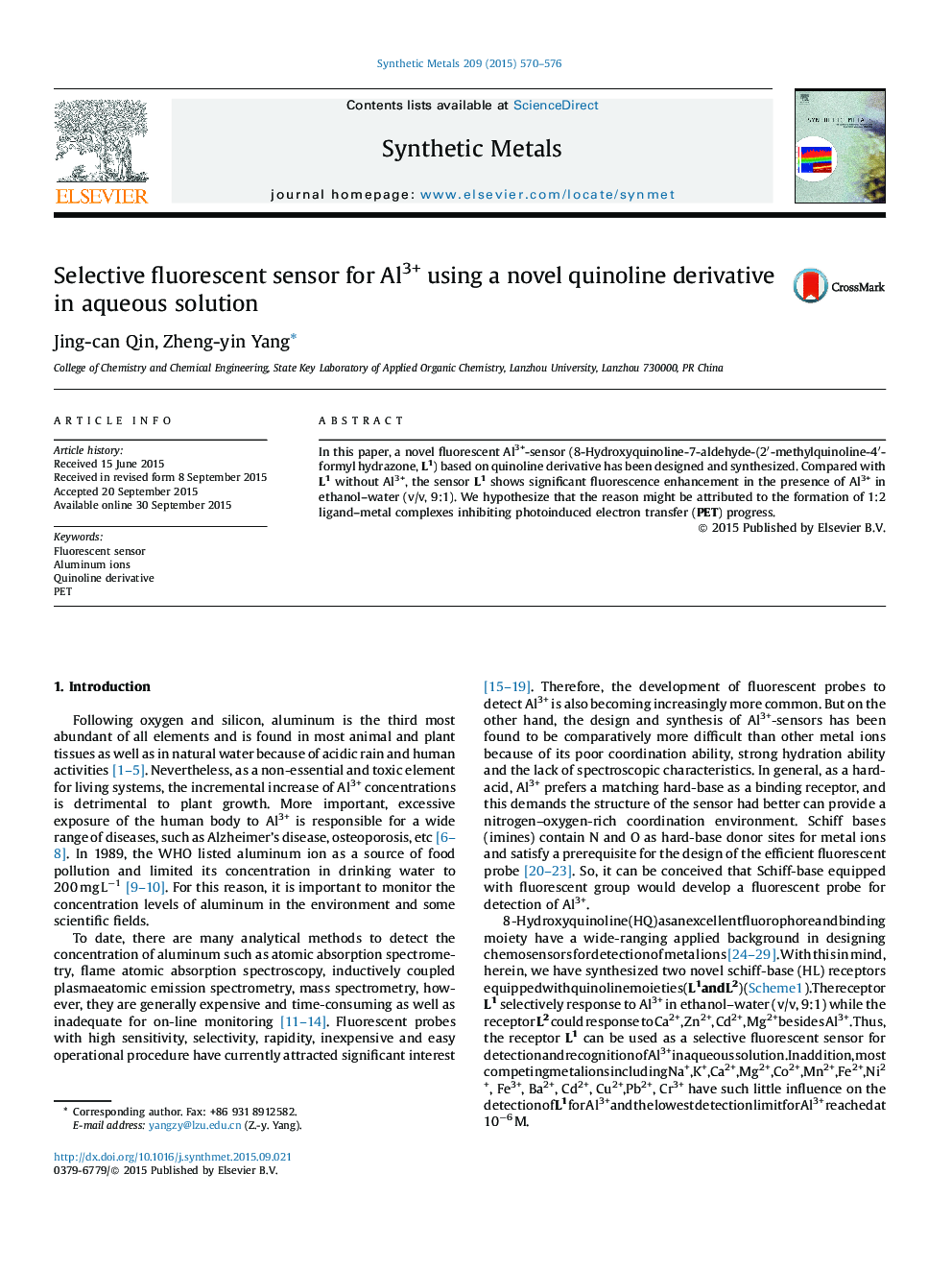| Article ID | Journal | Published Year | Pages | File Type |
|---|---|---|---|---|
| 1440545 | Synthetic Metals | 2015 | 7 Pages |
•2-methyl quinoline-4-carboxylic hydrazide was rarely synthesized.•We have designed a fluorescent chemosensor for recognition of Al3+ base on PET.•The sensor shows a large fluorescence enhancement in the present of Al3+.•The detection limits for Al3+ reach at 10−6 M level in aqueous solution.
In this paper, a novel fluorescent Al3+-sensor (8-Hydroxyquinoline-7-aldehyde-(2′-methylquinoline-4′-formyl hydrazone, L1) based on quinoline derivative has been designed and synthesized. Compared with L1 without Al3+, the sensor L1 shows significant fluorescence enhancement in the presence of Al3+ in ethanol–water (v/v, 9:1). We hypothesize that the reason might be attributed to the formation of 1:2 ligand–metal complexes inhibiting photoinduced electron transfer (PET) progress.
Graphical abstractFigure optionsDownload full-size imageDownload as PowerPoint slide
